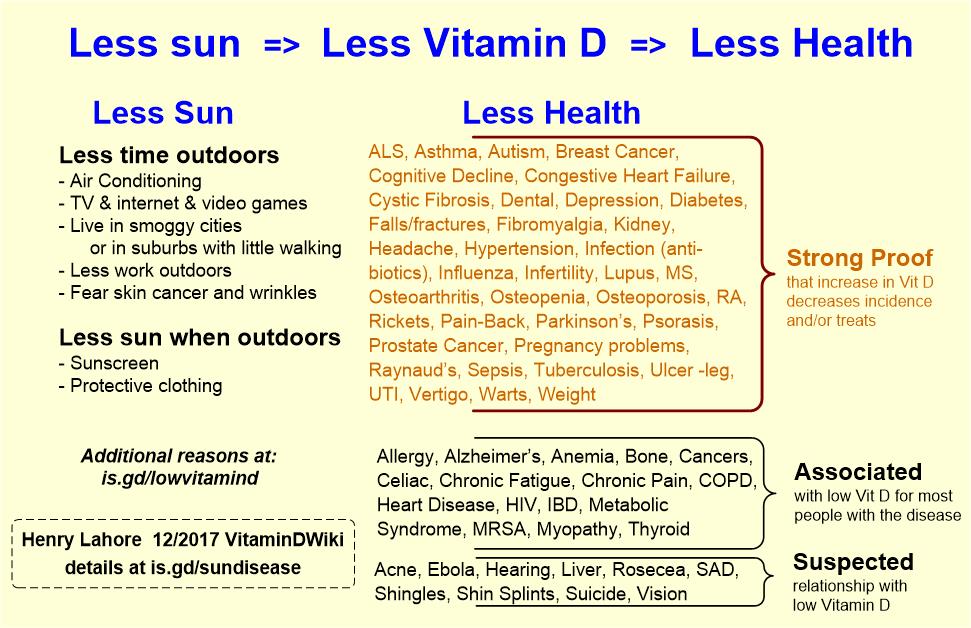Seniors who feel healthier have higher levels of vitamin D (30 ng)
Older Swedish Adults with High Self-Perceived Health Show Optimal 25-Hydroxyvitamin D Levels Whereas Vitamin D Status Is Low in Patients with High Disease Burden
Martin Carlsson 1,2,* , Pär Wanby 3, Lars Brudin 4,5, Erik Lexne 6, Karin Mathold 7, Rebecca Nobin 8, Lisa Ericson 2, Ola Nordqvist 9 and Göran Petersson 2
(This article belongs to the Special Issue Vitamin D: Current Issues and New Perspectives)
 ::Click on chart for details::
::Click on chart for details::
📄 Download the PDF from VitaminDWiki

Controversy pervades the definition of adequate and optimal vitamin D status. The Institutes of Medicine have recommended serum 25(OH)D levels above 50 nmol/L based upon evidence related to bone health, but some experts, including the Endocrine Society and International Osteoporosis Foundation, suggest a minimum serum 25(OH)D level of 75 nmol/L to reduce the risk of falls and fractures in older adults.
In a cross-sectional study, we compared vitamin D status in people =75 years selected from four groups with a frailty phenotype, combined with a control group free from serious illness, and who considered themselves completely healthy .
Only 13% of the 169 controls were vitamin D deficient (S-25(OH)D) < 50 nmol/L), in contrast with
49% of orthopedic patients with hip fractures (n = 133),
31% of stroke patients (n = 122),
39% of patients visiting the hospital’s emergency department =4 times a year (n = 81), and
75% of homebound adult residents in long-term care nursing homes (n = 51).
The mean vitamin D concentration of the healthy control group (74 nmol/L) was similar to a suggested optimal level based on physiological data and mortality studies, and much higher than that of many officially recommended cut-off levels for vitamin D deficiency (<50 nmol/L). The present study provides a basis for planning and implementing public guidelines for the screening of vitamin D deficiency and vitamin D treatment for frail elderly patients. View Full-Text
